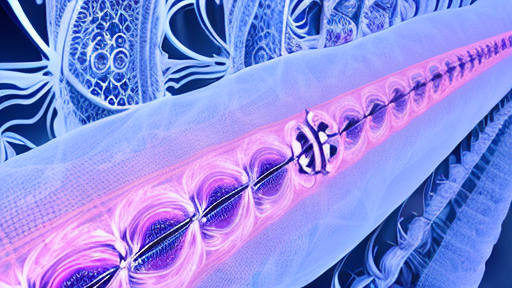Decoding the Function of Myofascia: Key Insights Revealed
Decoding the Function of Myofascia: Key Insights Revealed
Welcome to this in-depth exploration of myofascia and its fascinating role in our bodies! If you’ve ever wondered what myofascia is and how it functions, you’re in the right place. In this article, we’ll delve into the details and uncover key insights about this intricate network of connective tissue that plays a crucial role in our overall well-being.
Understanding Myofascia: What is it?
Myofascia refers to the interconnected web of fascia that wraps around and envelops every muscle, bone, organ, and nerve in our bodies. Fascia is a complex network of collagenous fibers that provide structural support, maintain shape, and allow for smooth movement of our muscles and organs. It’s like a continuous spiderweb that runs throughout our bodies, creating a web of connectivity.
The Function of Myofascia: More Than Just a Protective Covering
Contrary to popular belief, myofascia is not just a passive covering that holds our muscles together. It is an active and dynamic tissue that plays a critical role in many aspects of our body’s function. Let’s take a closer look at some of the key functions of myofascia:
1. Structural Integrity and Support
One of the primary functions of myofascia is to provide structural integrity and support to our bodies. It acts like a scaffold that helps maintain the shape and alignment of our muscles, bones, and organs. It provides stability and resistance to external forces, allowing us to maintain posture, move efficiently, and withstand physical stress.
2. Force Transmission and Distribution
Another important function of myofascia is to transmit and distribute forces generated by our muscles throughout the body. It acts as a medium that allows muscles to work together synergistically, transmitting forces from one muscle to another and ensuring smooth and coordinated movement. It also helps distribute forces evenly across the body, reducing the risk of injury and optimizing performance.
3. Flexibility and Range of Motion
Myofascia plays a crucial role in our flexibility and range of motion. It allows our muscles and joints to move freely and smoothly, facilitating efficient movement and preventing restrictions. Healthy and pliable myofascia ensures that our muscles and joints can move through their full range of motion without limitations, enhancing our overall mobility and functional capacity.
4. Proprioception and Sensory Feedback
Myofascia is rich in sensory receptors that provide proprioceptive feedback to our brain. Proprioception refers to our body’s ability to perceive its position and movement in space. Healthy myofascia provides sensory feedback to our brain, helping us maintain balance, coordination, and spatial awareness. It also plays a role in pain perception and can influence our perception of pain in various ways.
The Fascinating World of Myofascial Research: Key Insights Revealed
In recent years, there has been a growing interest in understanding the intricate world of myofascia, and research in this area has revealed several key insights. Let’s explore some of the latest findings that shed light on the function of myofascia:
1. Fascial Continuity: A Seamless Web of Connectivity
Research has revealed that myofascia forms a continuous and seamless web of connectivity throughout our bodies. It connects muscles, bones, and organs in a complex and interconnected network, creating a functional continuity that influences our overall movement and posture. This fascial continuity allows for the transmission of forces and information across different parts of the body, creating a holistic and integrated system.
2. Myofascial Force Transmission: A Collaborative Effort
Studies have shown that myofascia not only transmits forces generated by muscles but also collaborates with them in generating force. Myofascial chains, which are interconnected pathways of fascia, have been identified in the body, linking muscles and fascia into functional units. This suggests that myofascia works in coordination with muscles to generate and transmit forces, highlighting its active role in movement and function.
3. Plasticity of Myofascia: Adapting to Change
Research has revealed that myofascia is a highly adaptable tissue that can change its properties in response to mechanical stress, inflammation, and other factors. This plasticity allows myofascia to remodel and adapt to the demands placed on it, such as during exercise, injury, or changes in posture. This dynamic nature of myofascia highlights its ability to respond to different stimuli and play a role in tissue repair, recovery, and adaptation.
4. Myofascial Dysfunction: Implications for Health and Performance
Emerging evidence suggests that myofascial dysfunction, such as fascial restrictions, adhesions, and stiffness, may have implications for our health and performance. Myofascial dysfunction can lead to limitations in flexibility, range of motion, and muscle function, potentially affecting our movement, posture, and overall physical performance. It has also been implicated in pain and injury, as fascial restrictions can disrupt normal movement patterns and increase mechanical stress on tissues.
Conclusion: The Intricate Web of Myofascia Unveiled
In conclusion, myofascia is a complex and dynamic network of connective tissue that plays a crucial role in our bodies. It provides structural support, transmits and distributes forces, influences flexibility and range of motion, and provides sensory feedback. Recent research has shed light on the fascinating functions of myofascia, revealing its seamless continuity, collaborative role in force transmission, plasticity, and implications for health and performance.
Understanding the function of myofascia can have significant implications for various aspects of our well-being, including movement, posture, performance, and injury prevention. Further research in this field may uncover more insights into the role of myofascia and its potential applications in various areas of healthcare, sports, and rehabilitation. As our understanding of myofascia continues to evolve, it opens up new possibilities for optimizing our physical function, performance, and overall health.
You may like this video!
